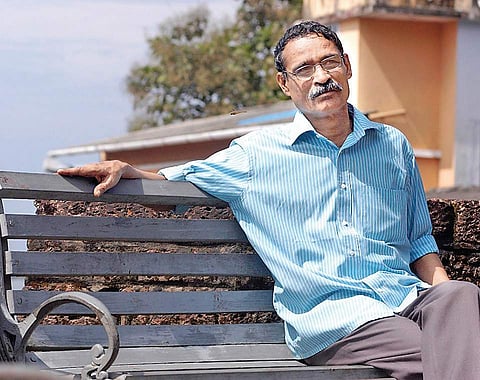

Professor Michael Halliburton, a well-respected medical anthropologist, had written a paper in 1998 titled ‘Suicide: A Paradox of Development in Kerala’, in which he had set out to examine why a state that boasted of the highest literacy in India as well as impressive socio-economic development, could also have the highest suicide figures in the country. Back then, the suicide rate in Kerala was thrice the national average. An unsettling fact, and one that seems at odds with the generally held belief of an idyllic God’s Own Country.
N Prabhakaran’s Theeyoor Rekhakal was published in 1999. A novel about a journalist who goes to a north Kerala village named Theeyoor, which has earned the dubious distinction of having an unparalleled number of suicides, Theeyoor Rekhakal has now been translated into English (by Jayasree Kalathil) and published as Theeyoor Chronicles. This is a novel built up like a piece of non-fiction: it gives the impression of something between reportage and the narrator’s imagination, as the unnamed journalist (who is the narrator) goes to Theeyoor and tries to discover the reasons behind the many suicides.
What he unearths as he goes about, talking to people, discovering the past, is not so much an account of suicides, but of deaths in general—and, equally importantly, of the lives that preceded those deaths. From the long-ago diaries of a dying man, or from the reminiscences of a man reputed to work miracles and heal the seemingly incurable, he learns more about Theeyoor (which literally means ‘the land of fire’).
Through a series of chapters, the tales of many lives unfold. Lives that entwine with each other, lives which sometimes have only fleeting contact with Theeyoor and its people before going their way. And the people themselves are a varied lot: from a wealthy man who runs a ‘blade’ business, lending money; to a ‘holy man’ who seems to possess powers of divine healing. Prabhakaran sets these characters against a backdrop of the political events in Kerala (and to a degree, in other parts of India as well).
More than a novel, this is a series of vignettes. There is no single plot, with little binding the chapters together, besides a common geographical setting. And yet, Prabhakaran writes so well, his characters are so alive, that the book remains interesting, gripping: almost as if one really were seeing the lives of these people unfold.
Kalathil’s translation is a pleasure to read, and the appendices to the book help in a better understanding of it. The Translator’s Note and the second appendix, the Political Background, especially go a long way in furthering an appreciation of Theeyoor Chronicles for readers who may not be familiar with the political history of Kerala in the 20th century.